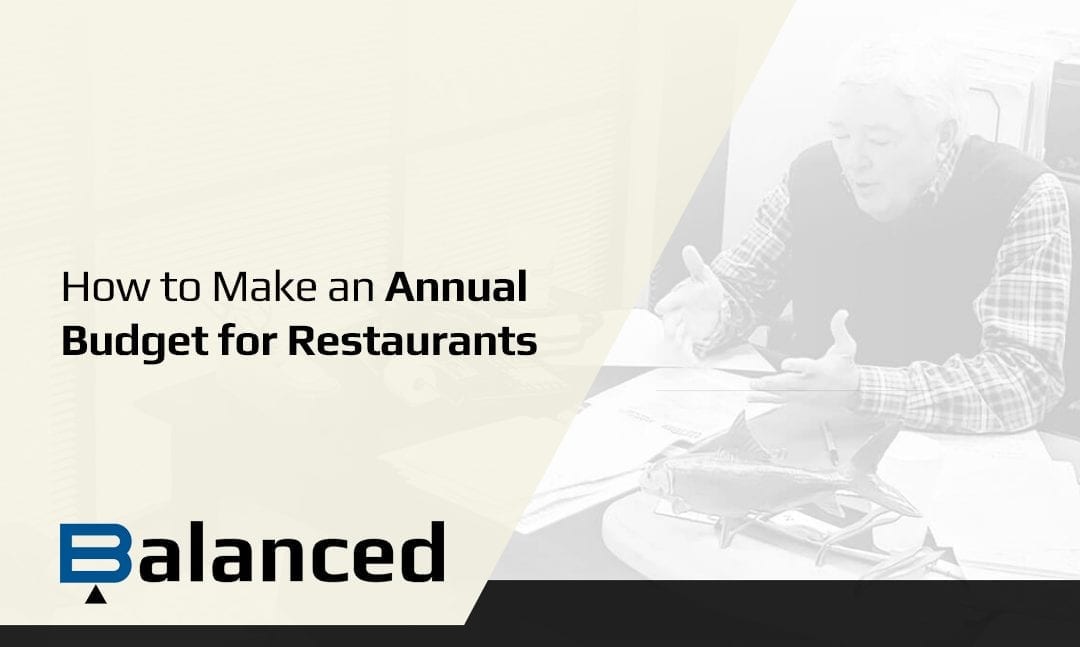
It’s that time of year again! The joyous and fulfilling time of annual budget preparation. For some, like our very own, Nick Moore it truly is joyous and fulfilling. Seriously, in the restaurant industry, annual budgets can provide a source of hope and heartache all at the same time. To keep things Balanced, our annual budget is used for two very important reasons:
- Planning for the coming year while comparing this year versus the previous year.
- “Staying the course” – tracking progress in relation to the plan.
The planning aspect is strategic. It’s our best-case scenario for the coming year. It’s a goal that must be realistic to forecast sales based on history and current trends. The “staying the course” is more tactical. It’s a monthly and quarterly comparison to the P&L (Profit and Loss) for real-time adjustments in the restaurant. For investors and banks, an annual budget is critical to evaluating investment viability and loan risk. So, even if you’re just thinking about opening a restaurant or becoming a franchise partner for an existing brand, you will need an annual budget.
Sounds like the annual budget is kind of a big deal, right? Across industries, an annual budget is a guiding light. But (big but), before downloading one of those free annual budget templates online, it’s important to know that the restaurant industry goes a little rogue with what’s included in the budget. Check out how Balanced lays out an annual budget below:
Parts to the Restaurant Annual Budget
- Gross Sales
- Prime Cost
- Controllable Expenses
- Non-Controllable Expenses
- Net Income
Gross Sales
Some people call this Topline Sales. This is total sales before discounts, coupons or comps. We choose to use Gross Sales instead of Net Sales (Gross Sales less discounts, coupons and comps) to get a true measure of food cost control. If you use Net Sales, your food cost will vary with the number of discounts, coupons and comps. And, if you have more than one location, using Gross Sales will allow you to compare food and labor costs in the different stores on a level playing field.
Prime Cost
Prime cost is the combination of Food and Labor Costs. Most of the time, Food and Labor Costs hold the most power when it comes to Gross Margin but are the least controllable. Food and labor costs are the two largest expenses for any restaurant operator and are directly impacted sales. As a restaurant operator, you have no control over the price of cheese or bread, and it’s usually nonnegotiable. You also NEED people to make and serve the food, so Labor Cost is another nonnegotiable. Menu pricing and correct sales forecasting coupled with proper labor scheduling will put you in control of your Prime Cost.
Gross Sales – (Food Cost + Labor Cost) = Gross Margin
A Gross Margin of 40 – 45% of Gross Sales is essential to turning a profit. The Balanced team reviews Labor Costs daily to make adjustments where needed. Adjustments could mean cutting a few closers earlier, having a salaried manager close instead of open or prepping less food for a slow trending week. Food cost is monitored on a weekly basis with inventories taken on the last day of the accounting week. Weekly inventories are a must to control food cost expense. This is how our Operations team makes the “least controllable” Prime Cost more controllable. Gross Margin is the Balanced team’s guiding light.
Controllable Expenses
Some people call this Operating Income/Expenses. This section is more controllable at the restaurant level for the Operator or General Manager. Although Controllable Expenses can fluctuate, they are far less volatile than Prime Cost. Expenses such as laundry services, uniforms, trash removal, maintenance, telephone, internet, pest control, etc. are in this section. As the Operator or General Manager, you have a direct impact on these types of expenses.
Non-Controllable Expenses
Non-controllable expenses are somewhat fixed expenses that include rent plus CAM, Insurance and Property Taxes, as well as personal property taxes, liability insurance, fee and dues, royalties (if applicable), etc.
Net Income
Net income is the bottom line. Is Gross Sales – Prime Costs – Controllable Expenses – Non-Controllable Expenses. Preparing a budget for the upcoming year using this year’s results with any adjustments to sales and costs will tell you ahead of time where you are headed financially and where improvements are needed to make your investment worthwhile.
Simpler is better when it comes to formatting an annual budget. The P&L is for the day to day details. The annual budget is big-picture strategy and best-case scenario. The two work together to evaluate business and ensure the restaurant is “staying the course” to success. With this guiding light approach, you can feel confident as you go through the year that if you: 1) hit your sales projections and 2) control your costs as you budgeted them, you will end each month and the year in the black.
About Balanced
Put simply, we are your partner. We help find balance in the crazy and exciting world of restaurant. Our clients are some of Austin’s favorite eateries. We help hospitality/restaurant clients with bookkeeping & financial services, human resources, marketing, operations and all the fun in between.
Ready to get started? Us too. Contact us today